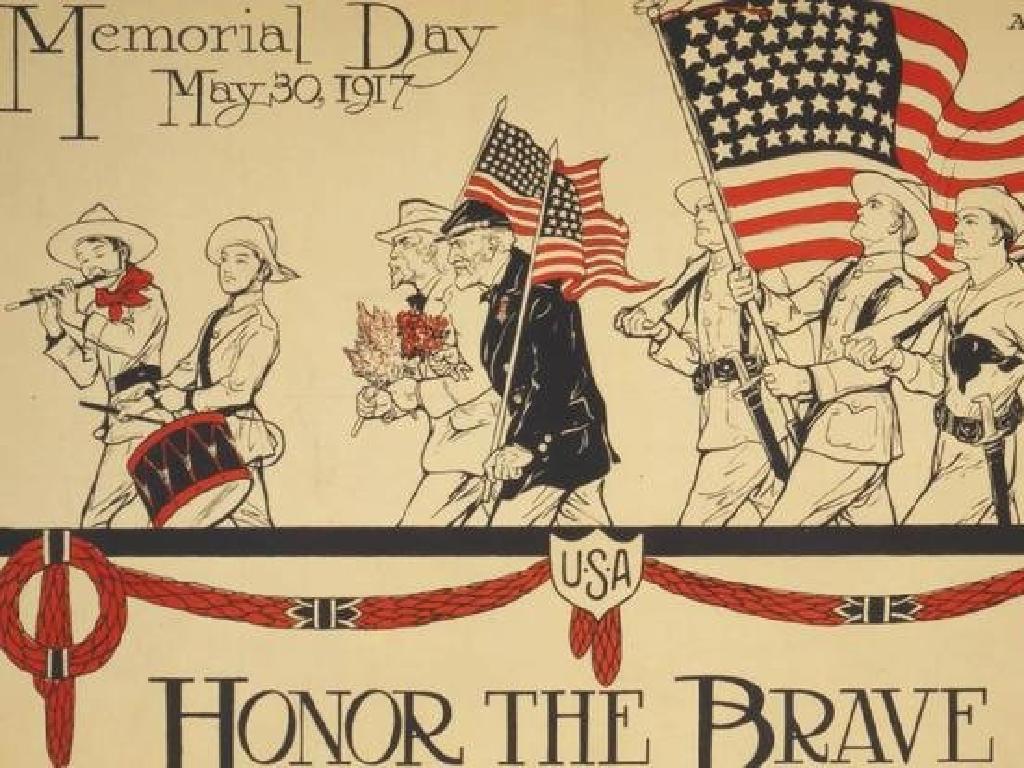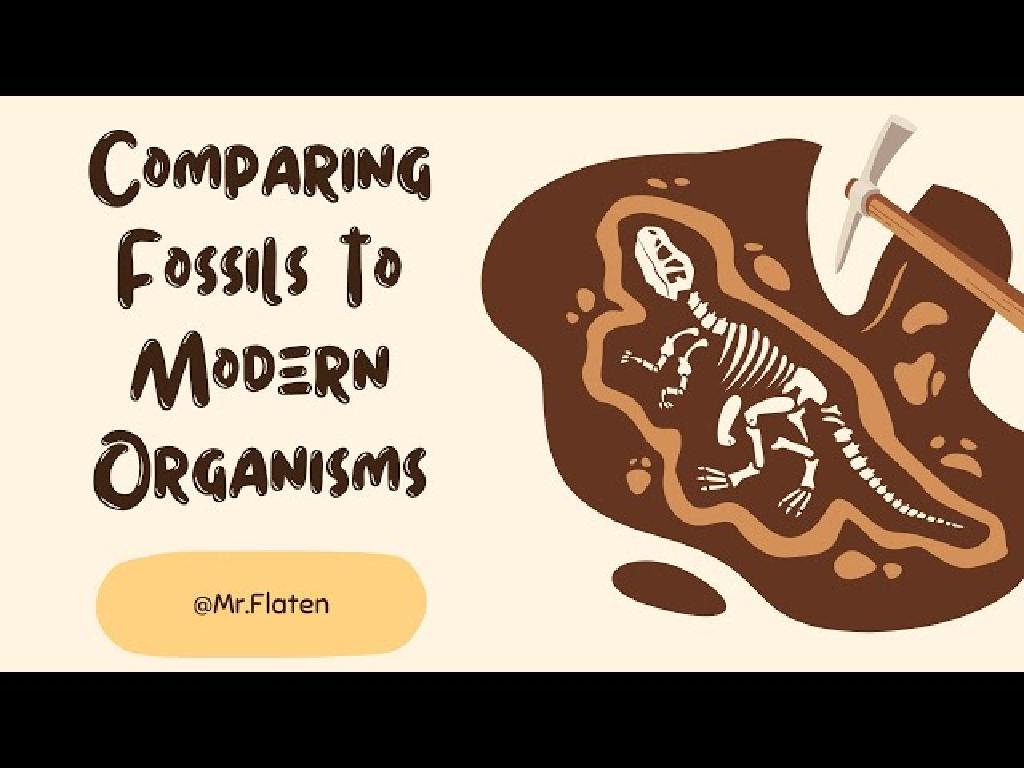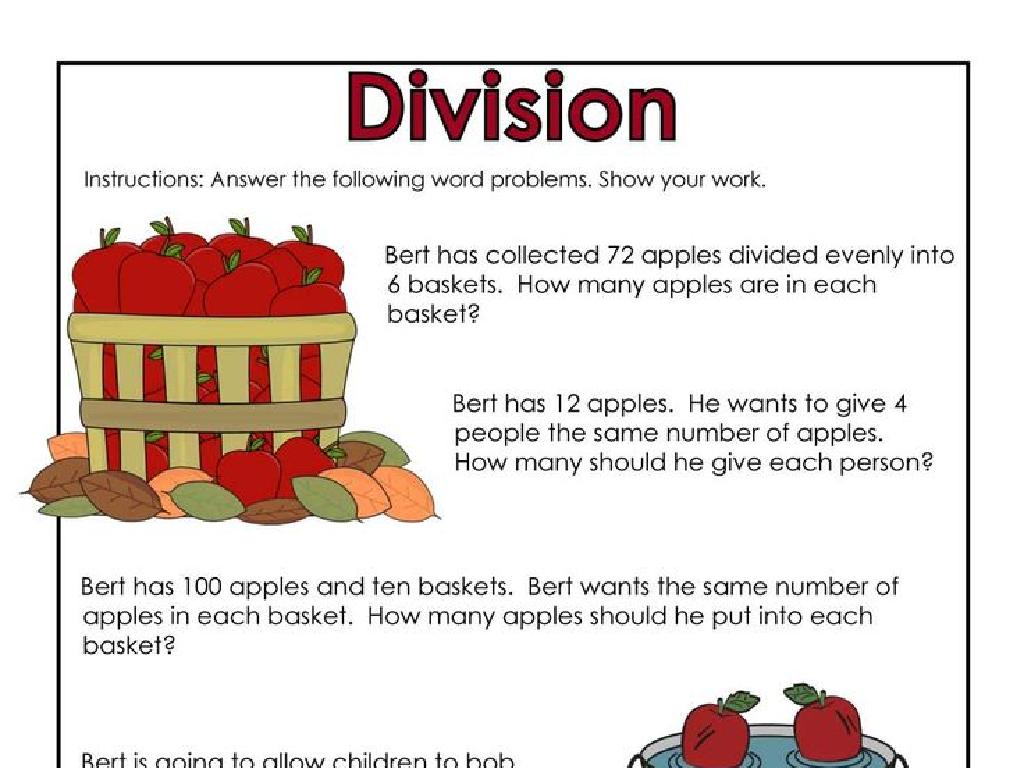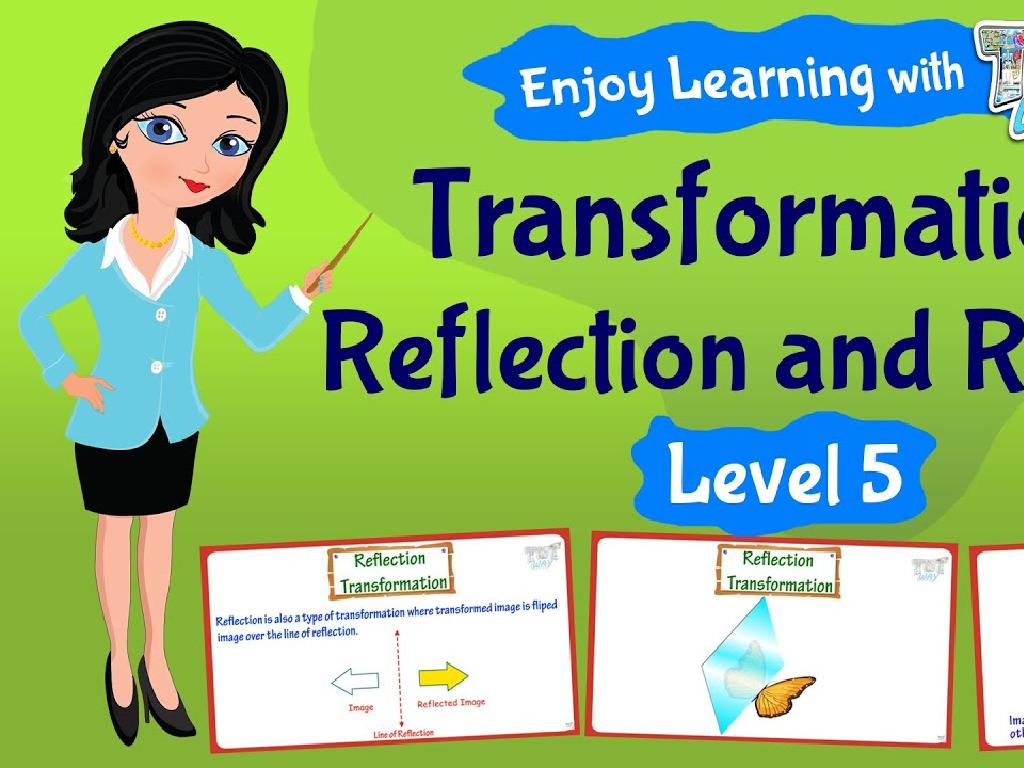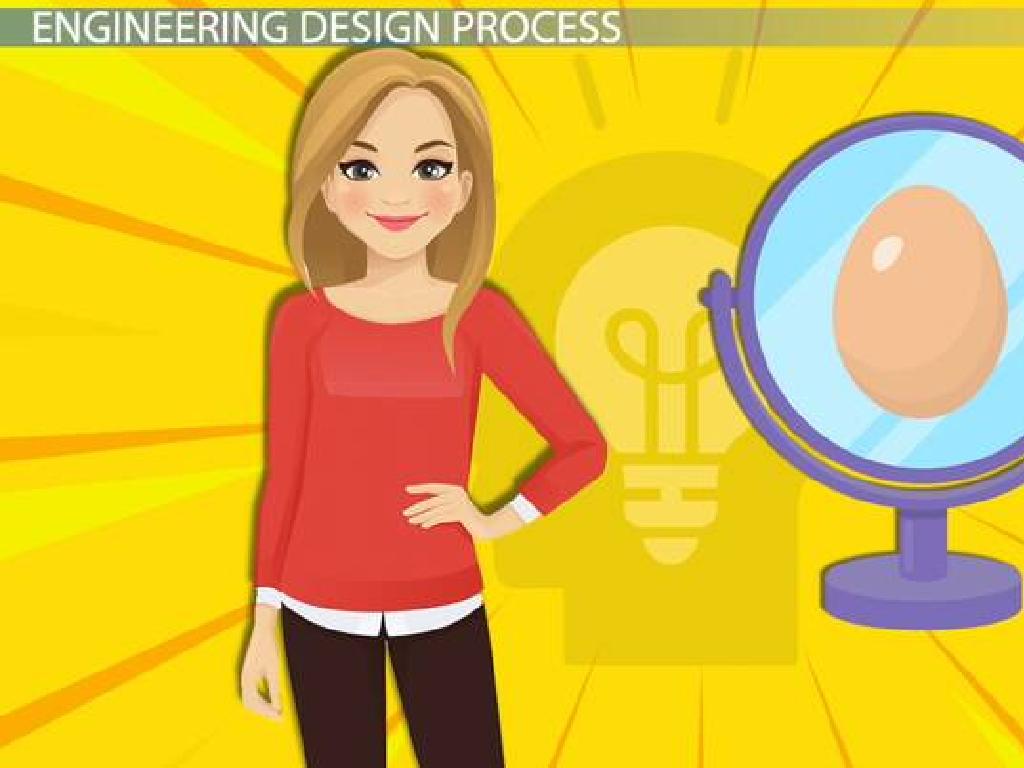Interpret Figures Of Speech
Subject: Language arts
Grade: Seventh grade
Topic: Literary Devices
Please LOG IN to download the presentation. Access is available to registered users only.
View More Content
Exploring Figures of Speech
– What are Literary Devices?
– Tools that writers use to express ideas creatively
– Figurative Language Significance
– Enhances expression beyond literal meanings
– Types of Figures of Speech
– Metaphors, similes, personification, etc.
– Examples in Literature
– ‘The classroom was a zoo’ – Metaphor for chaos
|
This slide introduces students to the concept of literary devices, with a focus on figures of speech. Literary devices are the tools that writers use to enhance their storytelling and convey complex ideas in an engaging way. Figurative language, a key type of literary device, allows writers to express ideas in non-literal and more powerful ways. Today’s lesson will delve into various figures of speech, such as metaphors, similes, and personification, which are used to create vivid imagery and emotional impact. Provide examples from well-known literature to illustrate how these devices function in context. Encourage students to think of their own examples and to recognize figures of speech in their daily reading.
Exploring Figures of Speech
– Define Figures of Speech
– A phrase with a meaning different from its literal words
– Purpose in writing
– To add creativity, emphasize ideas, or convey emotions
– Literature & daily language examples
– Metaphors in poetry or idioms like ‘break a leg’ in conversations
– Impact on reader’s experience
– Engages readers, creates imagery, and expresses complex ideas vividly
|
This slide introduces the concept of figures of speech, which are expressions where words are used in a non-literal sense to convey a particular meaning or effect. Writers use these to add depth and creativity to their writing, to emphasize their points, and to evoke emotions in the reader. Provide examples from both literature and everyday language to show how pervasive and impactful figures of speech are. Discuss how they enhance the reader’s experience by creating vivid imagery and expressing ideas in a more engaging way. Encourage students to think of figures of speech they have encountered in their reading or in conversations.
Exploring Figures of Speech
– Understanding similes
– A simile uses ‘like’ or ‘as’ to compare, e.g., ‘as brave as a lion’.
– Grasping metaphors
– A metaphor makes a direct comparison, e.g., ‘time is a thief’.
– Personification examples
– Personification gives human traits to objects, e.g., ‘The wind whispered’.
– Recognizing hyperboles
– Hyperbole is an extreme exaggeration, e.g., ‘I’m so hungry I could eat a horse’.
|
This slide introduces students to the various types of figures of speech, which are tools that writers use to create vivid and imaginative expressions. Similes and metaphors are both used to draw comparisons, but similes use connecting words like ‘like’ or ‘as’, while metaphors do not. Personification involves giving human characteristics to inanimate objects or abstract ideas, making the description more relatable. Hyperbole involves deliberate exaggeration for emphasis or effect. Encourage students to find their own examples of each figure of speech from books they’ve read or create original ones. This will help them understand how figures of speech enhance language and communication.
Exploring Similes in Literature
– What is a simile?
– A simile compares two things using ‘like’ or ‘as’.
– Examples of similes
– ‘As busy as a bee’, ‘like a bolt from the blue’
– Crafting your own similes
– Create similes using everyday objects or experiences.
– Class activity: Finding similes
– Read a paragraph and highlight the similes.
|
This slide introduces students to similes, a fundamental figure of speech in literature. Begin by defining a simile and how it uses ‘like’ or ‘as’ to draw comparisons. Provide vivid examples that they can easily relate to. Encourage students to think creatively and come up with their own similes, using objects or experiences from their daily lives. For the class activity, provide a paragraph rich in similes and ask students to identify them. This exercise will enhance their understanding of how similes add depth to writing and help them recognize the use of this literary device in texts they read.
Exploring Metaphors
– Understanding metaphors
– A metaphor is a direct comparison without using ‘like’ or ‘as’, e.g., ‘Time is a thief.’
– Similes vs. metaphors
– Similes use ‘like’ or ‘as’ for comparison, metaphors do not.
– Class activity: Similes to metaphors
– Convert similes from your book into metaphors.
– Practice with examples
– ‘He is as brave as a lion’ becomes ‘He is a lion in battle.’
|
This slide delves into metaphors, a key literary device in language arts. Begin by explaining that a metaphor is a figure of speech that describes an object or action in a way that isn t literally true but helps explain an idea or make a comparison. Show examples of metaphors and how they differ from similes, which use ‘like’ or ‘as’ to make comparisons. For the class activity, students will transform given similes into metaphors, fostering a deeper understanding of the concept. Provide guidance on how to identify the two and encourage creativity. The activity will help students grasp the nuances between similes and metaphors through practical application. Prepare to discuss several examples and ensure students understand the purpose and effect of using metaphors in writing.
Personification & Hyperbole in Literature
– Exploring personification
– Giving human traits to non-human things, e.g., ‘The wind whispered secrets’
– Understanding hyperbole
– Exaggeration for effect, e.g., ‘I’m so hungry I could eat a horse’
– Class activity: creative writing
– Discussing the impact on readers
– How do these figures of speech enhance storytelling?
|
This slide introduces two key literary devices: personification and hyperbole. Personification involves giving human characteristics to inanimate objects or abstract ideas, which can create a more vivid and relatable image in the reader’s mind. Hyperbole is an intentional exaggeration used to emphasize a point or to add humor. For the class activity, students will write their own sentences using personification and hyperbole to practice their use and understand their effects on reader engagement. Teachers should provide clear examples and encourage creativity. Possible activities include writing a short paragraph describing a setting using personification or creating exaggerated statements about everyday tasks using hyperbole.
Interpreting Figures of Speech
– Tips to identify figures of speech
– Look for similes, metaphors, personification, etc.
– Interactive class examples
– We’ll practice with sentences on the board
– Group poem activity
– Choose a poem, find figures of speech together
– Discuss and explain findings
– Share different interpretations with the class
|
This slide is aimed at helping students recognize and understand figures of speech within literary texts. Start by providing tips such as looking for comparisons (like similes and metaphors) or attributions of human qualities to non-human entities (personification). Use the board to interactively go through examples with the class, asking students to identify the figures of speech used. For the group activity, distribute different poems and have each group identify and discuss the figures of speech found. Each group will then explain their findings to the class, fostering a deeper understanding through discussion. The teacher should prepare a list of poems with clear examples of figures of speech and be ready to guide the discussion, ensuring that each group understands the concepts presented.
Let’s Practice: Figures of Speech in Stories
– Analyze a story for figures of speech
– Identify metaphors, similes, personification, etc.
– Discuss enhancement by these devices
– How do they add depth or emotion?
– Prepare findings for class discussion
– Summarize your analysis and thoughts
|
This slide is designed to engage students in a practical exercise where they will analyze a short story to identify and understand the use of figures of speech. Students should look for metaphors, similes, personification, and other literary devices. They should consider how these devices contribute to the story’s impact, such as adding emotional depth, creating vivid imagery, or enhancing the reader’s engagement. Encourage students to think critically about the author’s purpose for using these devices and how they influence the reader’s interpretation of the text. For the next class, students should be ready to share their findings, fostering a collaborative learning environment where they can learn from each other’s insights.
Class Activity: Crafting with Figures of Speech
– Write a paragraph with figures of speech
– Include a simile and a metaphor
– Compare using ‘like’ or ‘as’; ‘Her smile was as bright as the sun’
– Add personification and hyperbole
– Direct comparison; ‘Time is a thief’
– Share and discuss in class
– Give human traits to non-human; ‘The wind whispered secrets’
|
This activity is designed to help students practice using figures of speech creatively. Provide examples of each figure of speech to ensure understanding. Similes and metaphors enrich writing by comparison, personification adds life to inanimate objects, and hyperbole emphasizes points through exaggeration. After writing, students will share their work, fostering a collaborative learning environment. Encourage students to explain their choice of figures of speech and the effect they intended to create. This will deepen their understanding of literary devices and enhance their analytical skills.
Wrapping Up: Figures of Speech
– Recap: Figures of Speech
– Why use literary devices?
– Enhance writing, convey emotions, and create imagery
– Homework: Craft a poem
– Write a poem that includes simile, metaphor, personification, and onomatopoeia
– Include 4 figures of speech
|
As we conclude today’s lesson, remind students of the key figures of speech discussed and their significance in enriching language. Emphasize how literary devices can transform simple writing into vivid and engaging text. For homework, students are tasked to write a creative poem that incorporates at least four different figures of speech, such as simile, metaphor, personification, and onomatopoeia. This exercise will help them apply what they’ve learned and appreciate the beauty and power of language. Encourage creativity and personal expression, and let them know that they will have the opportunity to share their poems in the next class.

